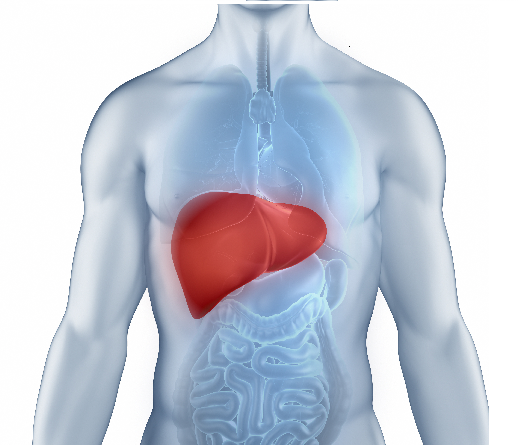Understanding Fetal Lung Mass: Causes, Symptoms, Diagnosis, and Management
A fetal lung mass is an abnormal growth in the lungs of a developing fetus, often detected during routine prenatal ultrasounds. Though rare, these masses can significantly impact fetal health depending on their type and size.
This article will discuss fetal lung masses, their types, causes, symptoms, diagnosis, and management.
What is Fetal Lung Mass?
Fetal lung mass, also known as congenital lung malformation or congenital pulmonary airway malformation (CPAM), is a rare condition that affects the development of the fetal lungs during pregnancy.
It is typically diagnosed through prenatal imaging, such as ultrasound or MRI, and can present in various forms, ranging from benign cysts to more complex tissue abnormalities.
Fetal lung mass can be classified into different types based on its characteristics:
1. Congenital Pulmonary Airway Malformation (CPAM)
2. Bronchopulmonary Sequestration (BPS)
3. Congenital Lobar Emphysema (CLE)
4. Bronchogenic Cysts
These masses can range from causing minimal issues to posing severe, life-threatening complications.
What Causes Fetal Lung Mass?
The causes of fetal lung mass are:
1. Abnormal Lung Development: Abnormal development that affects the bronchial tree and lung tissue can cause these masses.
2. Genetic Mutations: These masses can be linked to genetic mutations that disrupt normal lung development.
3. Sporadic Occurrence: Many cases are sporadic, meaning they occur by chance without a known cause.
4. Congenital Anomalies: Some fetal lung masses may be linked to other congenital anomalies or syndromes.
5. Improper Branching/Differentiation: Conditions like CPAM or BPS involve improper branching or differentiation of the bronchial and vascular structures in the fetal lungs. This can lead to cystic or solid masses forming, disrupting the normal lung architecture.
What are the Symptoms of Fetal Lung Mass?
Fetal lung masses usually do not cause direct symptoms. However, complications can be divided into prenatal, detectable through ultrasound, and postnatal, which may become evident after birth.
Prenatal lung mass symptoms include:
1. Polyhydramnios: Excess amniotic fluid can be caused by impaired fetal swallowing due to a large lung mass.
2. Hydrops Fetalis: A severe condition where the foetus develops abnormal fluid accumulation in tissues and organs, often indicated by swelling and other signs on ultrasound.
3. Pulmonary Hypoplasia: A specific developmental abnormality where the lungs are underdeveloped due to compression by the fetal lung mass, which can cause respiratory distress after birth.
After birth, the lung mass symptoms depend on the severity and type:
1. Respiratory Distress: Difficulty breathing, rapid breathing, or cyanosis (bluish skin colour) due to compromised lung function.
2. Feeding Difficulties: Infants may have trouble feeding if the mass affects their ability to swallow or breathe properly.
3. Failure to Grow: In severe cases, the infant may struggle to gain weight and develop normally due to breathing difficulties.
How is Fetal Lung Mass Diagnosed?
Fetal lung masses are most commonly diagnosed during routine prenatal ultrasounds, typically performed in the second trimester of pregnancy. Ultrasound imaging allows for the visualisation of the mass, its size, and its effect on surrounding structures.
Key diagnostic steps include:
1. Ultrasound Imaging: It is the primary tool for detecting fetal lung masses. It can reveal the mass’s presence, size, location, type and associated complications like mediastinal shift (heart displacement and other structures).
2. Fetal MRI: In some cases, fetal MRI may be used to assess the mass more thoroughly, mainly when the ultrasound findings are unclear or when the impact on adjacent organs and tissues needs to be evaluated.
3. Doppler Ultrasound: This technique assesses blood flow within the mass, which can help differentiate between types of lesions, such as bronchopulmonary sequestration, which has an abnormal blood supply.
4. Amniocentesis: If a genetic syndrome is suspected, amniocentesis may be conducted to collect a sample of amniotic fluid for genetic testing.
How is Fetal Lung Mass Managed?
Managing fetal lung masses depends on their type, size, and impact on the foetus. Management strategies include:
1. Monitoring: Regular ultrasounds to track the mass and assess its impact.
2. Prenatal Care: Specialist consultations for tailored care plans.
3. Delivery Planning: Planning for potential early delivery if complications arise.
4. Postnatal Care: Immediate assessment and treatment of respiratory issues after birth.
Fetal lung masses require careful monitoring and, in some cases, intervention to ensure the best possible outcome for the foetus and the newborn. Book a comprehensive prenatal screening with Dr. Lal PathLabs to evaluate and monitor the infant’s health.
FAQs
1. How serious is a mass in the lung?
The severity depends on the mass’s size and location; it can range from benign to life-threatening, requiring surgical intervention.
2. What is the normal range for fetal lung maturity?
Fetal lung maturity is typically assessed by measuring the lecithin-to-sphingomyelin (L/S) ratio; 2:1 or higher indicates maturity.
3. How to treat fetal lung mass?
Lung mass treatment varies, depending on the mass’s size, type, and impact. It may include monitoring, steroid therapy, possible fetal surgery, or postnatal surgery.














